Sodium Smarts: How to Protect Your Heart by Reducing Sodium Intake
Sodium is an essential mineral that plays a critical role in maintaining fluid balance, transmitting nerve impulses, and supporting muscle function in the body. However, while sodium is necessary for overall health, excessive consumption can lead to adverse health effects, particularly concerning hypertension (high blood pressure) and cardiovascular diseases like heart disease and stroke.
Hypertension affects approximately 1.13 billion people worldwide, which is about one in four adults. However, only about half of those with hypertension are aware of their condition. Hypertension is a leading cause of cardiovascular diseases, including heart disease and stroke, which are the leading causes of death globally. Additionally, hypertension is a significant risk factor for other health conditions such as kidney disease and dementia.

In Southeast Asia, studies have shown that hypertension prevalence ranges from 20% to 40% among adults. Rapid urbanization and changes in lifestyle factors such as diet, physical activity, and stress have contributed to the increasing prevalence of hypertension in many Asian countries.
The average sodium intake in many modern diets far exceeds recommended levels, largely due to the prevalence of processed and convenience foods. As a result, it's crucial to raise awareness about the importance of managing sodium intake and adopting healthier dietary habits to reduce the risk of developing hypertension and associated cardiovascular complications.
Understanding Sodium and its Effects
Sodium is a mineral that is naturally present in many foods and is commonly added to processed foods to enhance flavor and preservation. In the body, sodium is a vital mineral that plays a crucial role in maintaining fluid balance, nerve function and muscle contraction. However, when consumed in excess, sodium can have detrimental effects on cardiovascular health, particularly by contributing to high blood pressure (hypertension). Hypertension can damage blood vessels, increase the risk of heart attack and stroke, and contribute to other health problems such as kidney disease and vision loss.The Role of Sodium in Blood Pressure Regulation
Excess sodium in the body disrupts the delicate balance of fluids and electrolytes, causing an increase in blood volume. This, in turn, leads to elevated blood pressure as the heart works harder to pump blood through the arteries. The primary mechanism behind this process involves the kidneys, which regulate sodium levels in the blood by adjusting urine output. When there's an excess of sodium in the bloodstream, the kidneys adjust by holding onto more water to dilute the sodium concentration. This process is known as osmosis. As a result, the volume of blood circulating through your blood vessels increases, leading to higher blood pressure.The increased blood volume puts additional pressure on the walls of the blood vessels, causing them to stretch and become stiffer over time. This elevated pressure can damage the delicate lining of the blood vessels and contribute to the development of hypertension and cardiovascular diseases, such as heart attacks and strokes.
Sodium and Vascular Health
As explain earlier, high blood pressure exerts constant pressure on the walls of the arteries, causing them to become stiff and narrow over time. This condition, known as arteriosclerosis or hardening of the arteries, reduces blood flow and oxygen delivery to vital organs, including the heart and brain. Additionally, the increased force of blood against the arterial walls can lead to the formation of plaque, comprised of cholesterol, fats, and other substances. Plaque buildup further narrows the arteries and increases the risk of heart attack, stroke, and other cardiovascular complications.
The Impact on Cardiac Function
The heart, being a muscular organ, must pump blood efficiently to meet the body's oxygen and nutrient demands. However, when blood pressure remains consistently elevated due to excess sodium intake, the heart must work harder to overcome the increased resistance in the arteries. Over time, this strain can weaken the heart muscle and impair its ability to function properly, leading to conditions such as heart failure, heart attack or stroke. Recommended Sodium Intake Guidelines
Numerous studies have established a clear link between high sodium intake and hypertension (Mozaffarian et al, 2014; Graudal et al, 2019)Health organizations, including the American Heart Association and the World Health Organization, recommend limiting sodium intake to no more than 2,300 milligrams per day for most adults. However, individuals with certain health conditions, such as hypertension, diabetes, or kidney disease, may need to further reduce their sodium intake to 1,500 milligrams per day or less.
It's essential for individuals to be mindful of their sodium intake and make informed choices when selecting foods. Reading nutrition labels can help identify high-sodium products and make healthier choices for overall health.
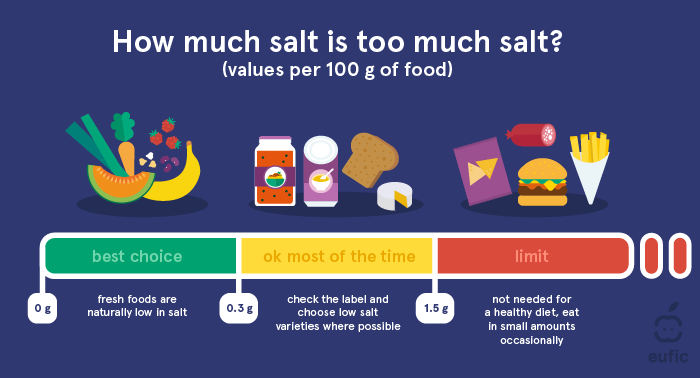
Some examples of foods that are commonly high in sodium content as listed below.
Processed meats: Deli meats, bacon, sausage, and hot dogs often contain high levels of sodium due to the salt added during processing and preservation.
Canned soups and broths: Many canned soups and broths are laden with sodium to enhance flavor and extend shelf life. Some varieties can contain more than 800 milligrams of sodium per serving.
Condiments and sauces: Soy sauce, teriyaki sauce, barbecue sauce, and salad dressings can be significant sources of sodium, especially when used liberally.
Packaged snacks: Chips, pretzels, crackers, and other snack foods often have high sodium content, as salt is commonly added for taste and preservation.
Fast food and restaurant meals: Burgers, fries, pizza, and other fast food items are typically high in sodium, contributing to daily sodium intake, especially when consumed frequently.
Frozen meals: Frozen dinners and entrees may seem convenient, but they often contain large amounts of sodium to enhance flavor and extend shelf life. Some frozen meals can contain over 1,000 milligrams of sodium per serving.
Processed cheese: Cheese spreads, cheese slices, and cheese dips can be high in sodium, as salt is used in the cheese-making process and as a preservative.
Sources of Sodium in the Diet
Sodium is prevalent in many foods, particularly processed and packaged items such as canned soups, sauces, condiments, and snack foods. Restaurant meals and fast food also tend to be high in sodium, contributing to excessive intake.
Some examples of foods that are commonly high in sodium content as listed below.
Processed meats: Deli meats, bacon, sausage, and hot dogs often contain high levels of sodium due to the salt added during processing and preservation.
Canned soups and broths: Many canned soups and broths are laden with sodium to enhance flavor and extend shelf life. Some varieties can contain more than 800 milligrams of sodium per serving.
Condiments and sauces: Soy sauce, teriyaki sauce, barbecue sauce, and salad dressings can be significant sources of sodium, especially when used liberally.
Packaged snacks: Chips, pretzels, crackers, and other snack foods often have high sodium content, as salt is commonly added for taste and preservation.
Fast food and restaurant meals: Burgers, fries, pizza, and other fast food items are typically high in sodium, contributing to daily sodium intake, especially when consumed frequently.
Frozen meals: Frozen dinners and entrees may seem convenient, but they often contain large amounts of sodium to enhance flavor and extend shelf life. Some frozen meals can contain over 1,000 milligrams of sodium per serving.
Processed cheese: Cheese spreads, cheese slices, and cheese dips can be high in sodium, as salt is used in the cheese-making process and as a preservative.
To reduce sodium intake, it's essential to be aware of hidden sources of sodium and choose fresh, whole foods whenever possible. Cooking meals at home allows for better control over sodium content and provides an opportunity to use flavorful herbs, spices, and other seasonings in place of salt.
Strategies for Reducing Sodium Intake
There are several practical strategies individuals can use to reduce their sodium intake and promote heart health:1. Choose fresh, whole foods over processed and packaged items. Some examples of fresh, whole foods that are low in sodium compared to processed and packaged item.
- Fresh fruits and vegetables: Apples, bananas, oranges, berries, spinach, kale, broccoli, carrots, bell peppers, and cucumbers are all excellent choices. They are naturally low in sodium and packed with essential nutrients.
- Lean proteins: Skinless poultry, fish, tofu, legumes (such as lentils and beans), and lean cuts of beef or pork are great options. Choose fresh cuts of meat and avoid processed meats like sausages, bacon, and deli meats, which tend to be high in sodium.
- Whole grains: Opt for unprocessed grains like brown rice, quinoa, barley, oats, and whole wheat bread or pasta. These whole grains provide fiber, vitamins, and minerals without added sodium found in processed grain products like instant rice or flavored rice mixes.
- Dairy and dairy alternatives: Plain yogurt, unsweetened almond milk, and low-sodium cheeses are healthier choices compared to processed cheese spreads, flavored yogurts, and dairy-based desserts, which often contain added sodium.
- Nuts and seeds: Almonds, walnuts, sunflower seeds, and pumpkin seeds are nutritious snacks that are naturally low in sodium. Avoid salted or seasoned nuts and seeds, which can significantly increase sodium intake.
- Herbs and spices: Fresh herbs like basil, cilantro, parsley, and spices like garlic powder, onion powder, turmeric, and cinnamon are excellent flavor enhancers to season your dishes instead of relying on salt or high-sodium seasoning blends.
- Rosemary: This aromatic herb pairs well with chicken and pork. Sprinkle chopped fresh rosemary over grilled or roasted chicken breasts or pork chops, or add dried rosemary to marinades and rubs.
- Thyme: Thyme adds a subtle earthy flavor to chicken and pork dishes. Use fresh thyme leaves in marinades, stuffings, or sauces, or sprinkle dried thyme over roasted meats for added depth of flavor.
- Garlic: Fresh or minced garlic is a versatile ingredient that enhances the flavor of chicken and pork. Sauté minced garlic in olive oil and use it as a base for marinades or rubs, or roast whole garlic cloves with chicken or pork for a fragrant and flavorful dish. Or sprinkle garlic powder over fish fillets before grilling, baking, or broiling for a deliciously seasoned dish.
- Paprika: This spice adds a mild, slightly sweet flavor and a vibrant red color to chicken and pork. Sprinkle smoked or sweet paprika over chicken thighs or pork tenderloin before grilling or roasting for a delicious smoky flavor.
- Cumin: Cumin has a warm, earthy flavor that complements both chicken and pork dishes. Use ground cumin in spice rubs for grilled chicken or pork, or add whole cumin seeds to stir-fries or braised dishes for an extra layer of flavor.
- Lemon or lime zest: Citrus zest adds bright, citrusy flavor to fish dishes without the need for extra sodium. Grate the zest of fresh lemon or lime over grilled or broiled fish fillets just before serving to add a burst of freshness.
- Basil: Basil has a sweet, aromatic flavor that complements the delicate taste of fish. Use fresh basil leaves to garnish grilled or baked fish fillets, or add dried basil to marinades and sauces for a hint of Italian-inspired flavor.
- Black pepper: Black pepper adds a mild heat and pungent flavor to fish dishes. Season fish fillets with freshly ground black pepper before cooking to enhance their natural taste and aroma.
- Dill: Dill has a fresh, slightly tangy flavor that pairs beautifully with fish. Sprinkle chopped fresh dill over grilled or baked fish fillets, or add dried dill to marinades and sauces for a hint of herbal goodness.
3. Read nutrition labels carefully and choose low-sodium or sodium-free options when available. When reading nutrition labels to choose low-sodium or sodium-free options, it's helpful to understand the following guidelines:
- Sodium-Free: A product labeled as "sodium-free" contains less than 5 milligrams of sodium per serving.
- Very Low Sodium: A product labeled as "very low sodium" contains 35 milligrams or less of sodium per serving.
- Low Sodium: A product labeled as "low sodium" contains 140 milligrams or less of sodium per serving.
- Reduced Sodium: This term means that the product contains at least 25% less sodium compared to the original version of the product. However, the reduced-sodium version may still contain a significant amount of sodium, so it's essential to check the actual sodium content per serving.
- Unsalted or No Salt Added: These terms indicate that no salt or sodium-containing ingredients were added during processing. However, the product may still contain naturally occurring sodium from its ingredients, so it's essential to check the nutrition label for the exact sodium content.
4. Limit the use of salt and salty condiments in cooking and at the table.
6. Experiment with different cooking methods. Try grilling, steaming, and roasting, to enhance natural flavors without relying on added salt. Use herbs and spices for flavoring, if needed.
7. Be Mindful of high sodium food when eating out. We enjoy hawker centre food with its abundance of delicious choices as part of our multi-cultural society. Here are a couple lists of our local favorites and its accompanying sodium content. It is advisable to eat them in moderation.
By incorporating these strategies and mindful eating into our daily routine, individuals can gradually reduce the sodium intake and improve overall health and well-being.
Conclusion
Reducing sodium intake is a crucial step toward preventing hypertension and reducing the risk of heart disease and other cardiovascular complications. By being mindful of sodium content in foods, making healthier choices, and adopting a balanced diet rich in fruits, vegetables, whole grains, and lean proteins, individuals can take control of their heart health and enjoy a longer, healthier life. Here is a summary infographic from AHA.It's never too late to start making positive changes to improve heart health. By prioritizing low-sodium options and embracing a heart-healthy lifestyle, individuals can protect their heart and reduce their risk of chronic diseases associated with high sodium intake.
References
Mozaffarian, D., Fahimi, S., Singh, G. M., Micha, R., Khatibzadeh, S., Engell, R. E., ... & Ezzati, M. (2014). Global sodium consumption and death from cardiovascular causes. New England Journal of Medicine, 371(7), 624-634.Graudal, N. A., Hubeck-Graudal, T., Jurgens, G., & McCarron, D. A. (2019). The significance of duration and amount of sodium reduction intervention in normotensive and hypertensive individuals: A meta-analysis. Advances in Nutrition, 10(1), 76-89.
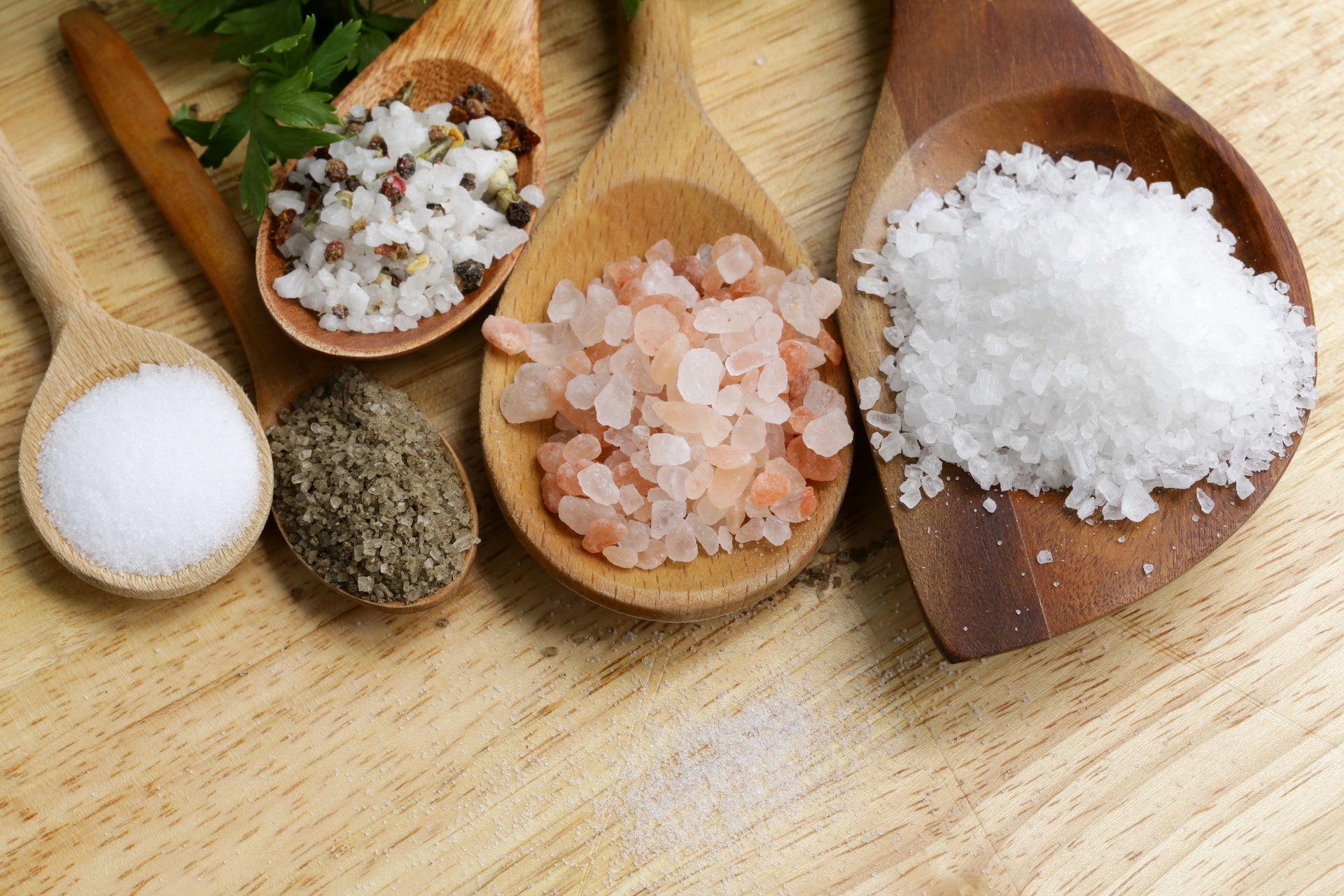



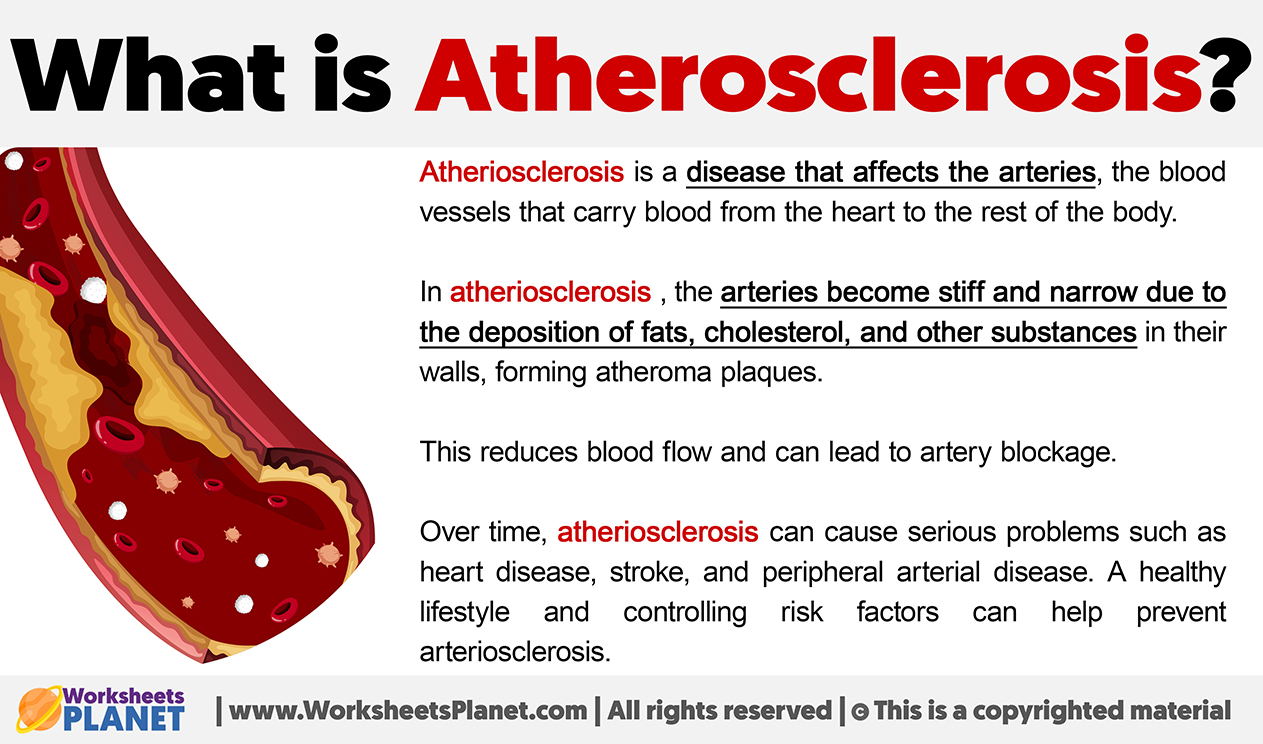

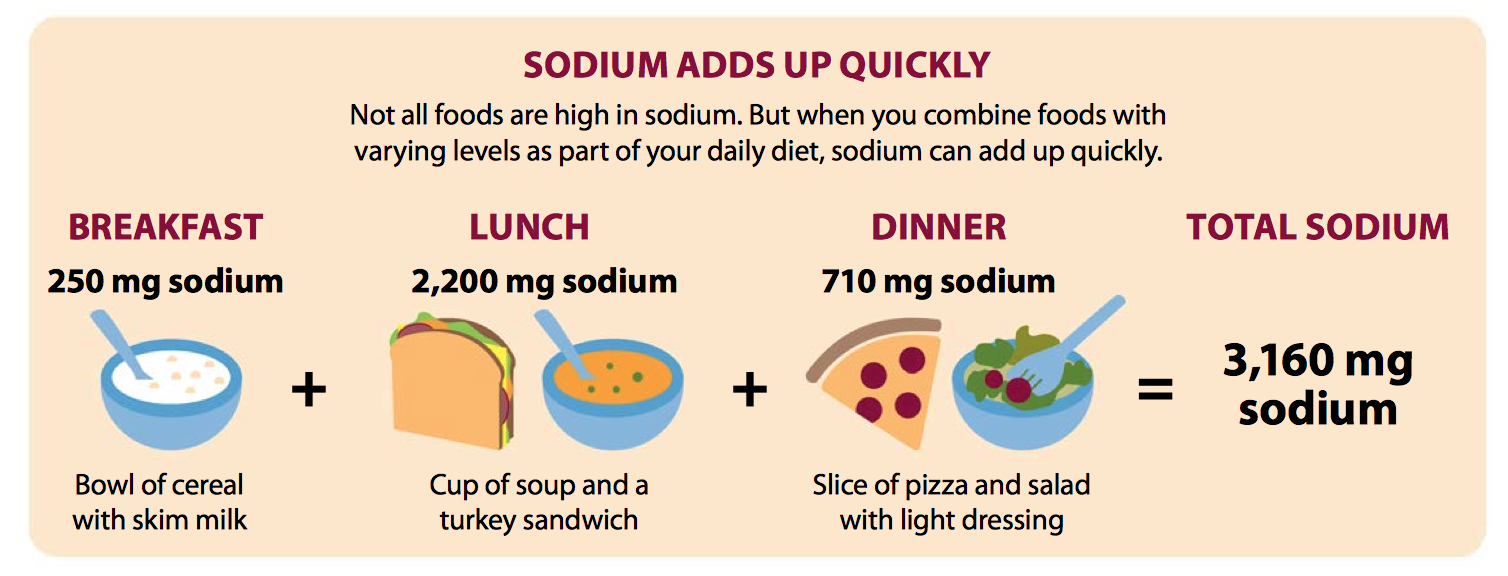



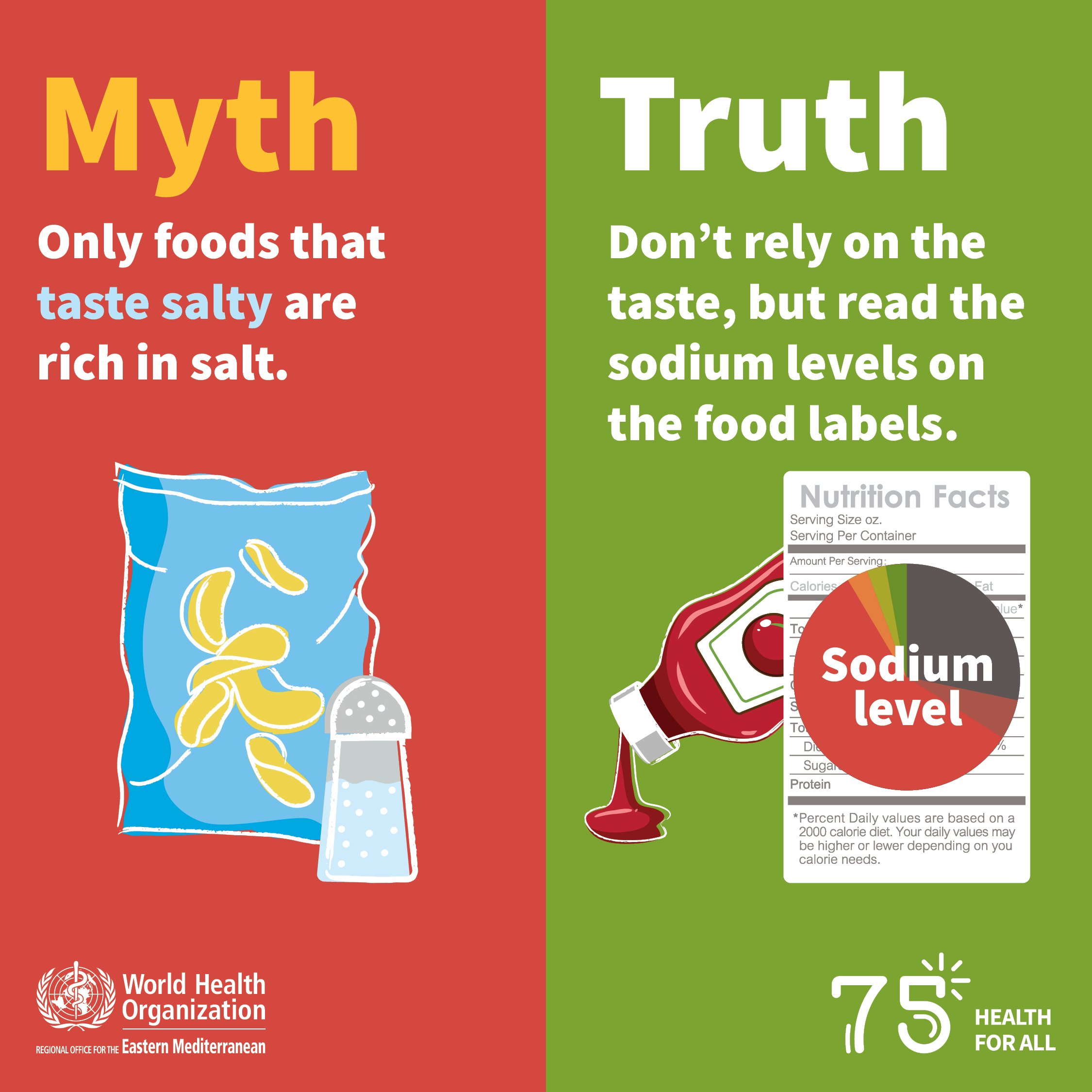
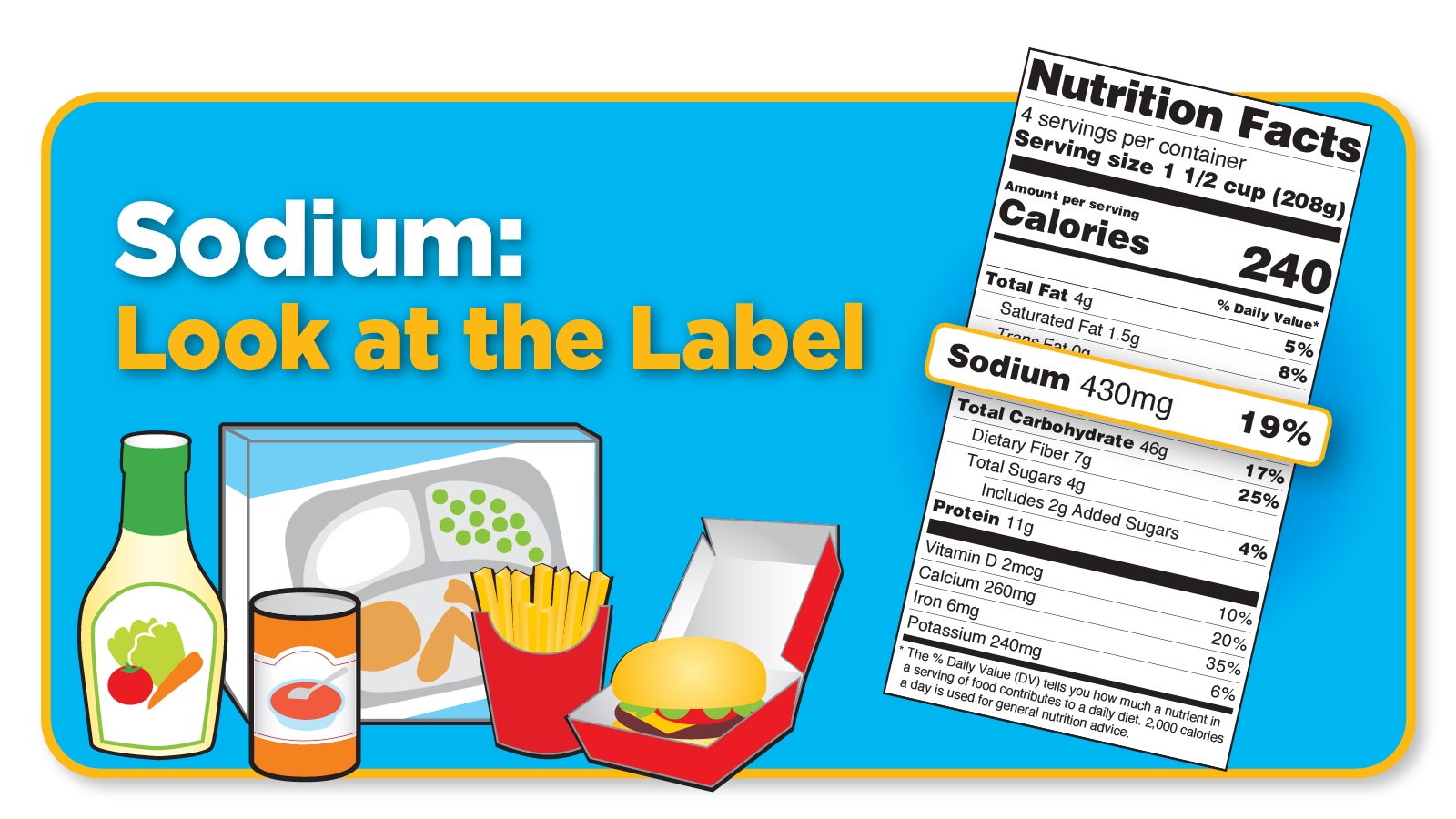
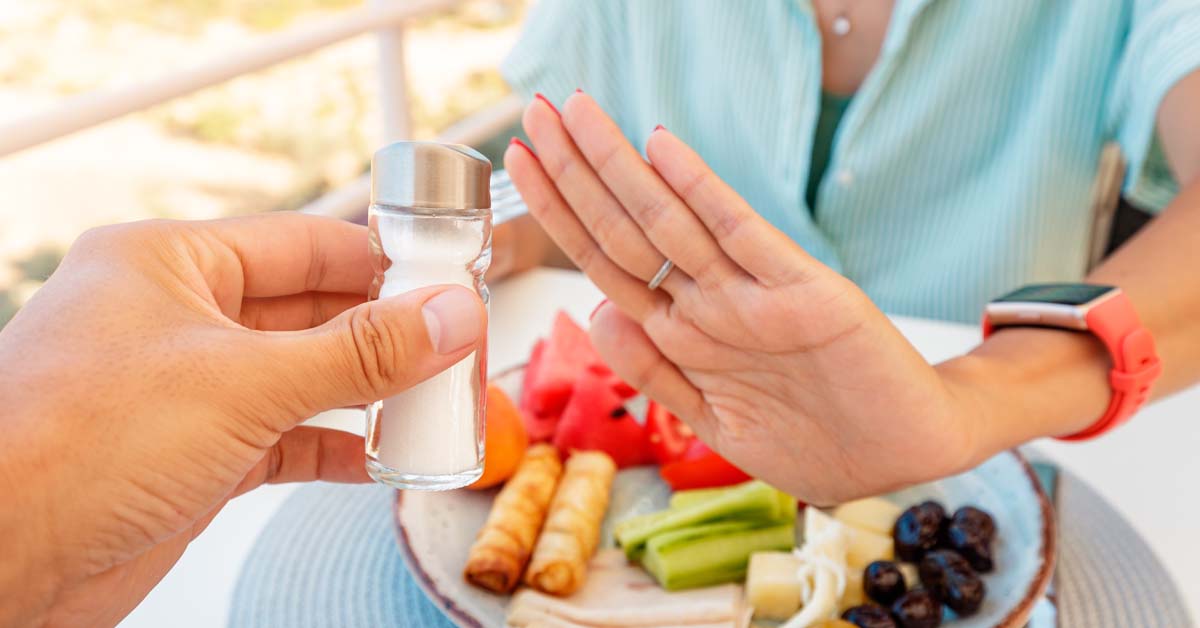
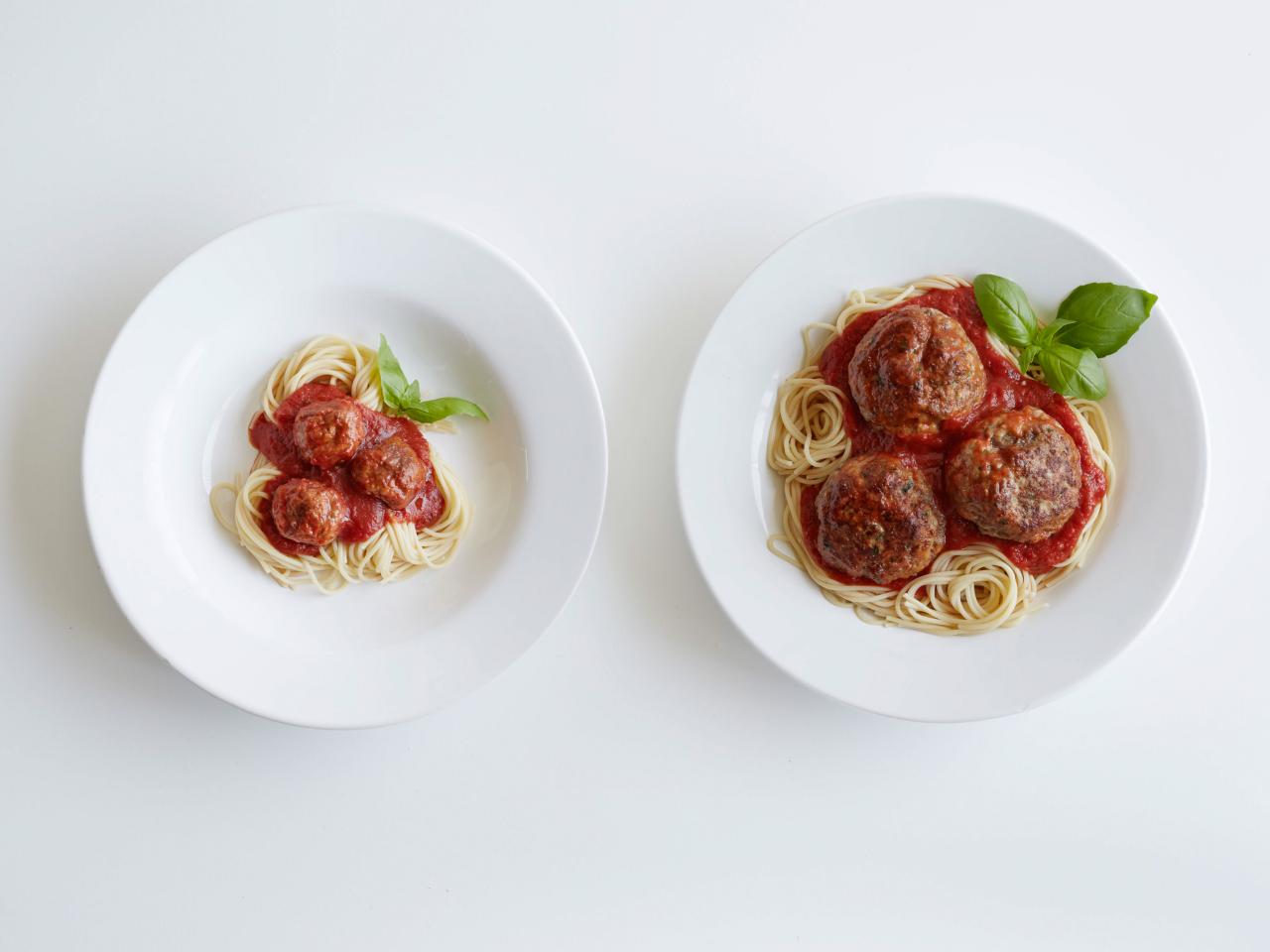


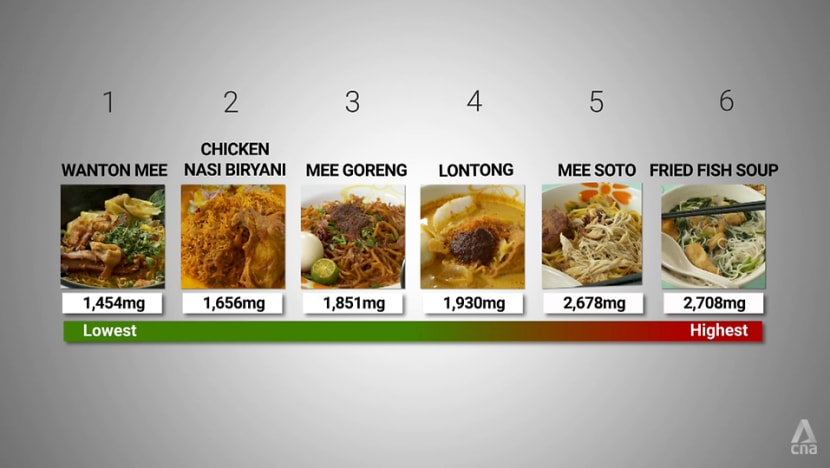
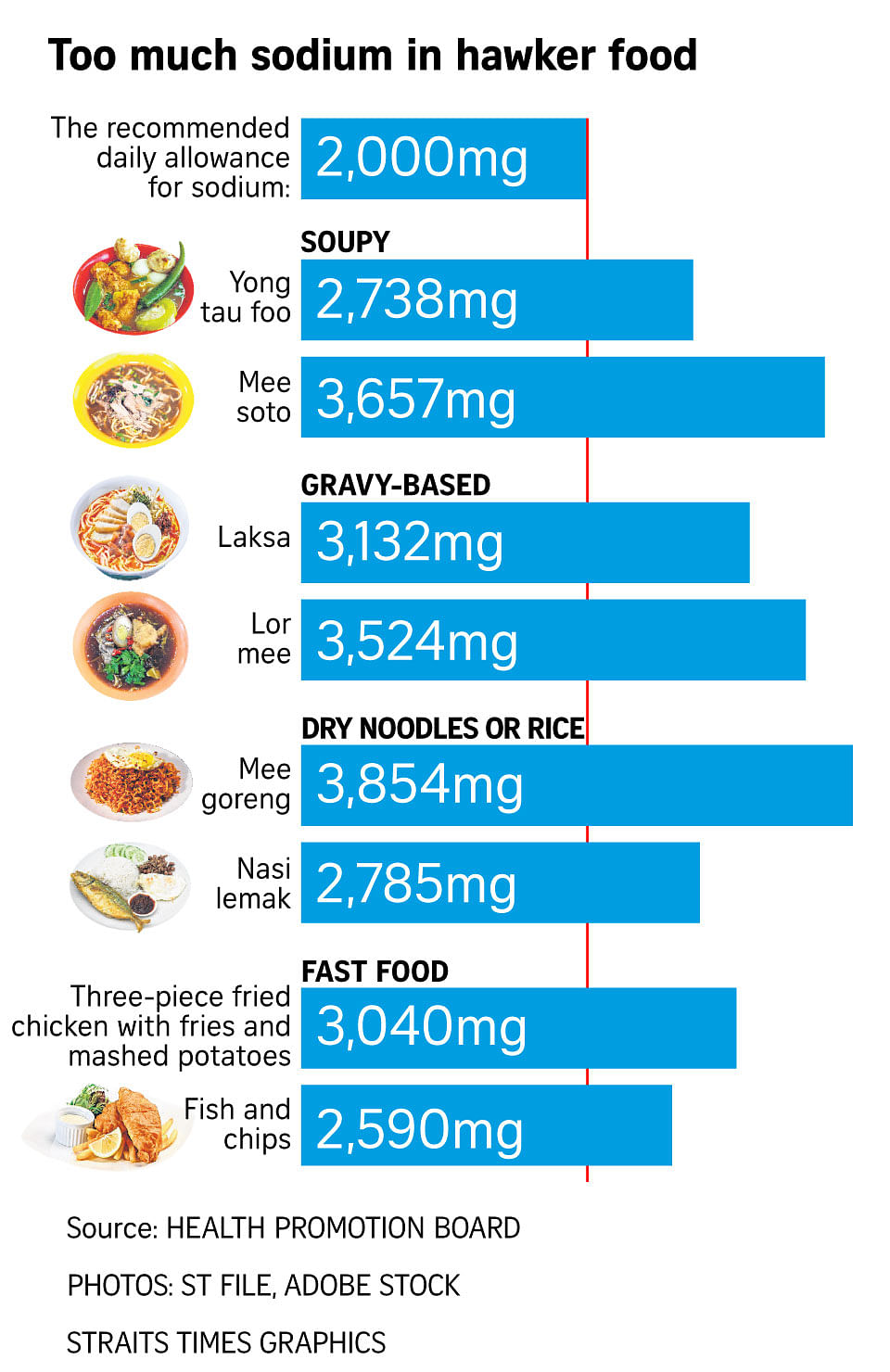

Comments
Post a Comment